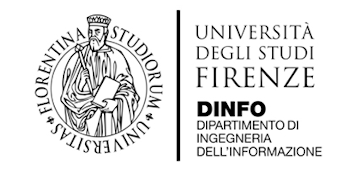Electromagnetic methods in Archaeology and Cultural Heritage applications
ORGANIZED BY

Rita Deiana
University of Padova, Italy
Giovanni Leucci
Institute for Archaeological and Monumental Heritage
National Research Council
Raffaele Martorana
University of Palermo, Italy
ABSTRACT
In recent years, the electromagnetic (EM) methods gained great popularity in the field of Cultural Heritage, where, nowadays, the application of these non-invasive techniques regards both contact and non-contact methods used at different scales in archaeology, cultural landscape analysis and ancient buildings or artworks measurements.
This session aims to collect contributions concerning applications and innovations in electromagnetic methods for Cultural Heritage research. In particular, we seek examples regarding the application of EM methods at different scales, from satellite, aerial or ground acquisitions for archaeological and cultural landscape analysis, all the way down to small scale applications for ancient buildings or artworks analysis and preservation.
TOPICS
In detail the main topics will be:
- Applications and new perspectives in the field of remote sensing techniques and satellite imagery types applied to the discovery, preservation, and management of archaeological sites and cultural landscape analysis;
- Aerial photography in archaeology: from historical and traditional vertical air-photos to multispectral and hyperspectral airborne scanners and Lidar data;
- Applications of GPR, FDEM, and TDEM for ground or airborne archaeological field research;
- Application and integration of non-invasive EM methods (e.g. GPR, HSR, IR Thermography, etc.) in NDT for in situ analysis of ancient buildings;
- Use and perspectives of non-invasive EM methods (e.g. Multispectral Imaging, XRF, etc.) for in situ analysis of Cultural Heritage artworks (e.g. wall paintings, paintings, manuscripts, mosaics, ceramics, etc.).
SPECIAL ISSUE ON ARCHAEOLOGICAL PROSPECTION
Selected papers submitted for at this Special Session and presented at MetroArchaeo2019 will be considered for publication in a Special Issue of Archaeological Prospection (IF 1.5) (https://onlinelibrary.wiley.com/journal/10990763).
SPECIAL ISSUE ON SENSORS
Authors of papers presented at MetroArchaeo 2019 and within the scope of Sensors may submit a technically extended version to the Special Issue "Electrical and Electromagnetic Sensors and Methods in Archaeology and Monumental Heritage".
The Special Issue website can be reached at:
www.mdpi.com/journal/sensors/special_issues/Metroarcheo_2019
ABOUT THE ORGANIZERS
Rita Deiana is Associate Professor of Applied Geophysics at Department of Cultural Heritage and Director of the Interdepartmental Center for Research, Study and Conservation of Archaeological, Architectural and Historical-Artistic Heritage - CIBA at the University of Padua. Graduated in Civil Construction Engineering, she deals with teaching, acquisition, and processing of geophysical data from the field to the laboratory scale, and time-lapse monitoring of shallow systems for research in archeology, geology and engineering.
She also applies non-invasive measurements at different scales for diagnostics on historic buildings (soil and structure) and for the study of valuable surfaces (mosaics, frescoes, stone cladding) and of phenomena of instability and degradation possibly related.
From 2012 to date, she has been responsible for a number of geophysical surveys on sites of interest in the field of Cultural Heritage, in collaboration with national and international research teams. As Director of the CIBA Interdepartmental research center, she currently coordinates a strategic network of laboratories for archaeometry and dating of materials for cultural heritage, geosciences, engineering and chemical sciences (DA.TA.MA.GE.E.C.C.H. - DATING TASK FORCE FOR MATERIALS IN GEOSCIENCE, ENGINEERING, CHEMICAL SCIENCE AND CULTURAL HERITAGE). She is the author of over 40 publications in international peer reviewed journals, and over 100 contributions in conference proceedings, books and other journals.
Giovanni Leucci, is scientific director of the laboratory of geophysics applied to archaeology and monumental heritage at IBAM-CNR. His research interests include the geophysical methods applied to archeology, geology, monumental heritage, engineering, environment. He has participated in numerous archaeo-geophysics campaigns in prestigious archaeological sites (Petra-Jordan, Hierapolis and Sagalassos - Turkey, Durres-Albany, the Roman ships of Pisa, Tindari, Ventarrón-Peru, Pompeii, etc.). He has received several international awards related to the quality of research and scientific production: Journal of Geophysics and Engineering Best Paper Award, the best poster award at the metroarchaeo conference in 2017, the IET Premium awards 2018. He is scientific evaluator for:
- The IUGS and UNESCO for the evaluation of candidate sites to the inclusion in the World Heritage list;
- the National Research Council of Romania, the German Research Foundation, the Czech Research Foundation, the Agency for Science and Higher Education of ENQA (European Association for Quality Assurance in Higher Education) of the Croatian Government for the evaluation of national and international research projects.
Raffaele Martorana, is PhD in Geophysics Applied to Environment and, since 2008, Assistant Professor of Applied Geophysics at DiSTeM (Dipartimento di Scienze della Terra e del Mare), University of Palermo. Here from 2002 he has teaching assignment on Applied Geophysics in degree course of Geological Sciences and in Master’s Degree of Geological Science and Technologies. His main research topics are:
- Applied Geophysics to Environment and Geology: integrated application of resistivity, electromagnetic and seismic methods to study geological, geomorphological and hydrological problems.
- Applied Geophysics to Engineering and Cultural Heritage: development of new acquisition techniques, design of new instrumentation and software for geoelectrical, electromagnetic, sonic and ultrasonic methods.
- Electrical resistivity tomography: methods of processing and tomographic inversion, development and testing of multi-electrode arrays.
He took part in several research projects, among which the most important are: PRIN 2003 Diagnostics with tomographic methods for the study of the vulnerability of buildings and artefacts; FIRB 2005 Reconstruction and enhancement of the archaeological landscape in the Mediterranean coastal environment through innovative non-invasive methods; PRIN 2007 Control, protection and management of groundwater resources. Innovative contribution of geophysical methods.
Seismic Microzonation of Level I in several municipalities of Sicily (OPCM 3907/2010 - Convention with the Regional Department of Civil Protection) PON 2012 SIGLOD - Intelligent System to support Management and Localization Of Landfills. He is the author of 37 publications indexed on Scopus or WoS and about 100 other on national and international journals and proceedings.
















